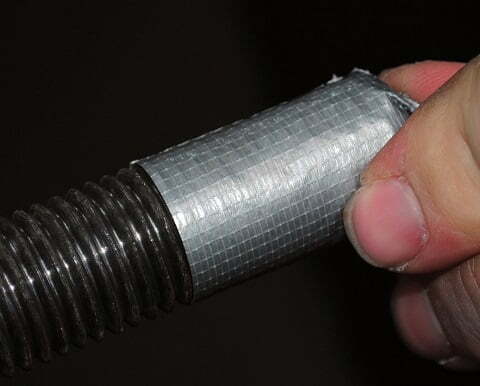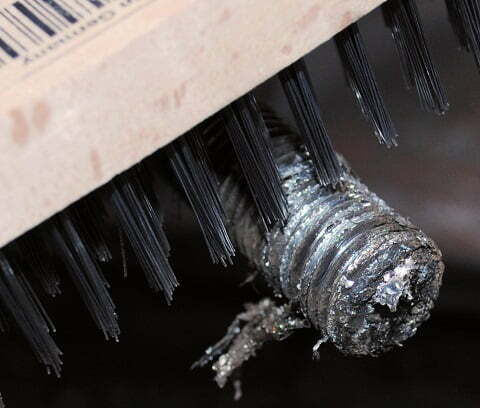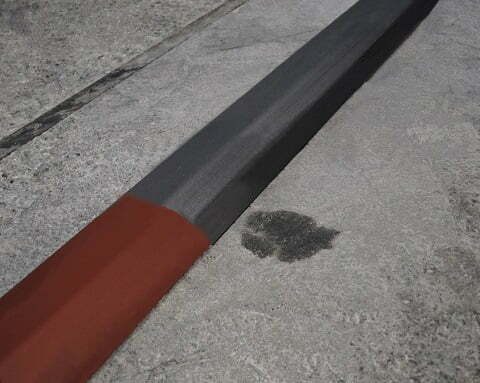Protecting Threads During Galvanising
When galvanizing a steel article, it may be desirable to prevent a coating from forming in certain areas which will have special functions such as:
- A threaded component on a fabrication
- Drilled holes
- Surfaces which will be subject to welding after galvanizing
There are several different methods that may be used to prevent a coating from forming on the steelwork, the preferred option being dependent upon the nature of the area which requires masking off.
High Temperature Masking Tape
Articles such as threaded bars may be protected by tightly wrapping a high temperature masking tape (typically silicone polyimide based) around relevant areas so as to prevent the ingress of molten zinc (see image below). Such tapes will withstand the galvanizing bath temperature of 450°C although charring or a carbon residue might be produced with some products, which subsequently can be easily removed by, for example wire brushing.

Anti-Galvanizing Solutions
On larger flat surfaces, the use of an anti-galvanizing solution may be used to prevent the formation of a coating. Some charring may occur resulting in a residue but this can be easily removed by wire brushing. In order to the anti-galvanizing solution to work effectively it is important that a sufficiently thick coating is achieved and the manufacturer`s or supplier`s instructions should therefore be closely followed. It is also important to ensure the product used in resistant to attack by acid as it will normally be applied prior to chemical cleaning in hydrochloric acid.
Masking Grease
Both flat or threaded areas may be masked off by using a grease which will act as a barrier between the steel surface and molten zinc, so preventing a coating from forming. However where such products are used, there is an increased risk of the grease contaminating the steel surface away from the area that requires masking so resulting in an uncoated area.

Other methods
For threaded females holes the processes outlined above will not be efficient and instead a suitably sized bolt may be inserted into the hole prior the galvanizing. This should prevent zinc clogging the thread but the bolt will become `welded` into position by formation of the coating on the surrounding surface. As a result, after galvanizing, the area around the bolt needs to be gently heated with a blow torch so as to soften the coating and allow the bolt to be removed.

Contact our team
At Sperrin Galvanisers, our highest priority is providing you unmatched service and support. Please contact our team, and we’ll be in touch as soon as possible.

Jim McErlean



